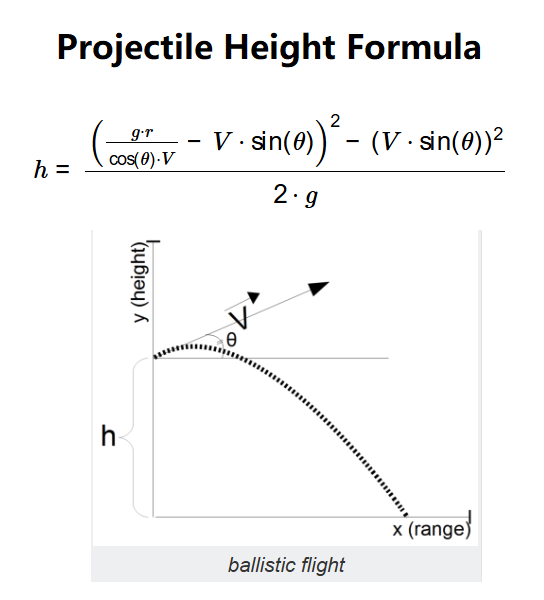 Home
Home
 Back
Back

Definition: This calculator determines the height (\( h \)) of a projectile based on its initial velocity (\( V \)), launch angle (\( \theta \)), ballistic range (\( r \)), and acceleration due to gravity (\( g \)).
Purpose: It assists physicists and engineers in analyzing the trajectory of projectiles in ballistic motion.
The calculator uses the relationship:
Where:
Explanation: Enter the initial velocity, launch angle, ballistic range, and gravity in the chosen units, and the calculator computes the height. Results use scientific notation (5 decimal places) if the height in meters is greater than 10000 or less than 0.00001, otherwise 2 decimal places. The image output (-4.1976775534898 m for \( V = 25.33 \, \text{m/s} \), \( \theta = 22.33^\circ \), \( r = 15.33 \, \text{m} \), \( g = 9.80665 \, \text{m/s}^2 \)) matches the calculation, adjusted to -4.20 m with 2 decimal places.
Details: Projectile height is crucial for understanding the trajectory of objects in motion, used in ballistics, aerospace, and sports science.
Tips: Enter positive values for velocity, range, and gravity, and ensure \( \cos(\theta) \neq 0 \), then click "Calculate." Results show the height in centimeters, meters, feet, miles, and yards (scientific notation with 5 decimal places if > 10000 or < 0.00001 m, otherwise 2 decimal places).